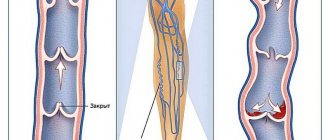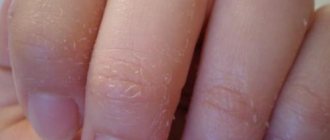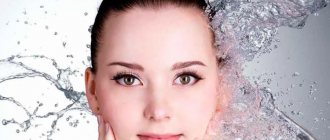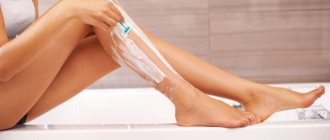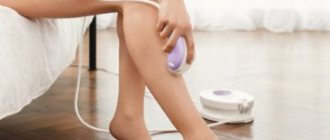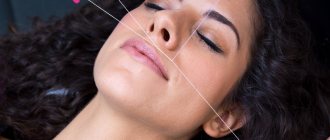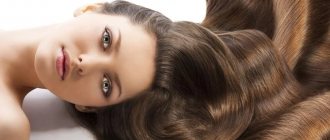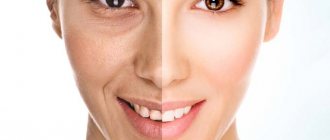The main thing in life is to maintain harmony and balance in everything. The same is true in the case of health. When we look at ourselves in the mirror, we want to see healthy, glowing skin without inflammation or unevenness.
All this is possible while maintaining the acid-base balance and maintaining the hydrolipid mantle. It would seem that what is complicated here and what am I doing wrong, because in the bathroom all the shelves are lined with skincare cosmetics, regular procedures in the morning and evening, step-by-step cleansing.
Let's understand on estet-portal.com pH balance works .
- Hydrolipid mantle: structure, composition, functions
- pH balance vs facial skin type
- Microbiome: enemy or friend when maintaining normal pH
Hydrolipid mantle: structure, composition, functions
The top layer of our skin - the epidermis - is a protective barrier, a kind of “shield” that protects the skin from mechanical and chemical damage, exposure to allergens, bacteria and viruses.
It consists of several layers:
- horny;
- brilliant;
- grainy;
- spiny;
- basal.
Hair PH - everything you need to know!
In chemistry, pH is a measure of acidity or alkalinity (basicity) in an aqueous solution. Its value ranges from 0 to 14. Pure distilled water at a temperature of 25 C is considered neutral. Solutions with a pH value below 7 are acidic, and above 7 are alkaline. Hair pH. The pH indicator is determined only for liquid substances, but phrases like “Skin pH”, “Hair pH” are repeatedly heard in advertising. What indicator are they talking about?
The answer to this question is quite simple. The pH of the skin and hair is taken to be the pH of the natural hydro-lipid layer of a healthy person covering the skin and hair. In fact, this is the pH of skin secretions that are produced by the skin and distributed along the length of the hair when combing. The pH of the skin, like hair, is about 5. This is the pH value that is optimal for humans and requires maintenance. pH of hair cosmetics. There are many cosmetics and hair treatments available on the market today that affect the pH of the hair in different ways. Some drugs shift the pH level to the alkaline side, thereby disrupting the natural conditions and structure of the hair, while some drugs, on the contrary, return us to an acidic environment, trying to neutralize any harmful effects. Therefore, it is advisable to divide all preparations for working with hair into three groups: acidic preparations, alkaline and neutral ones. Alkaline preparations for hair. The alkaline group includes preparations for hair coloring, curling and straightening. All these procedures have a prerequisite for work: penetration into the hair and carrying out internal changes in the hair. Since it is very difficult for any preparation to penetrate into healthy natural hair, alkaline components are added to these preparations to open the hair. Semi-permanent paints are more alkaline - their pH is in the range of 8-9. Permanent (persistent) dyes have a pH of 9-11 and this value very much depends on the manufacturer, as well as the degree of required hair lightening. So the lightening rows of dye are always the most alkaline, since they not only need to penetrate the hair, but also produce very strong changes inside the hair - lighten the pigment. Perms are at the same pH level. Their pH ranges from 6.8-9.1 and depends on the type of product, as well as the type of hair the product is designed for. For example, curls that give only a light wave (without hard curls - “without Thioglecol type of Curls”) have a lower pH, and stronger thioglecol curls are more alkaline. Modern thioglycolic preparations for chemical hair straightening have a pH value of 10 and are quite gentle in comparison with alkaline straightening, which was used 10 years ago and had a pH of 13. In a separate group of preparations according to the pH level, it is worth highlighting special lightening dyes and decorating creams and oils. This group, due to the strong clarifying effect that is required of it, has a high alkalinity level in the region of 10-11. The last drug in this group is quite common and is used mainly by hairdressers - lightening powder. This is the most alkaline group of drugs that is now available on the cosmetic market. The average pH of this group of drugs is 12. Acidic hair products. Almost all hair care products belong to the group of acidic drugs. These are a variety of masks, conditioners, acidic shampoos, lotions, etc. The purpose of these drugs is to care for and maintain hair. They are not required to make changes that are contrary to the nature of the hair, so there is no need for alkalis in the composition of the preparations. Moreover, the shifted pH level after aggressive procedures must be returned to natural, so the drugs in this group all contain acids. The most extensive subgroup among acidic preparations are masks and conditioners (balms. Their pH is in the range of 3.5-6.0 and depends on the purpose of the drug. So the most acidic masks are those that are used after aggressive hairdressing procedures, such as lightening. More neutral masks are often home care, which are applied simply after washing your hair. Acidic shampoos are the most popular group of shampoos on the current market. Their pH ranges from 4.5 to 5.5. Neutral hair preparations. The neutral group includes preparations that have a pH which are closest to the neutral value. This includes temporary (physical dyes), as well as neutral and weakly alkaline shampoos. The neutral group of shampoos has replaced its predecessors on the cosmetic market - alkaline shampoos (representatives of which are becoming less and less common in professional series. After all, Indeed, the task of shampoo is to thoroughly wash the surface of the hair, and not to clean it from the inside.Neutral shampoos are now a fairly cheap and effective option, compared to acidic ones. And the pH is in the range of 6-8. In the same group, it is worth noting alkaline baby shampoos pH, which is 7.3. This pH value for good baby shampoos is considered the most alkaline, since a further increase in pH in the shampoo causes eye irritation in children, and therefore is not acceptable. The last representative of the neutral group is a temporary (physical dye), its pH is close to neutral, but still often shifted to the slightly alkaline region and ranges from 6.5-8. This is due to the fact that the most effective fixation of any dye in the hair occurs only on the surface of the hair, which is loose from the alkaline effect.
pH balance vs facial skin type
There are four skin types depending on the amount of sebum secreted and the acid-base balance:
- normal;
- dry;
- fat;
- combined.
Normal skin is characterized by moderate secretion of sebum, there are no visible pores, and blood vessels are not visible through the surface.
With this type of skin and maintaining the acid-alkaline balance, there are no conditions for the development of inflammation, the skin tone is even. The pH of normal skin is 5,2 – 5,7.
Dry skin requires special care, since the sebaceous glands do not produce enough secretion. Yes, the skin looks smooth and matte at first glance, but without proper care, you can see keratinized scales and flaking on the surface. The pH of dry skin is 3.0 – 5.2 .
The prize sector on the reel is oily skin . Owners of this skin type usually have in their arsenal several series of skincare cosmetics to eliminate oily shine, control sebum production, narrow pores and prevent inflammation.
The skin is shiny, seems rough, and if not cared for, can resemble an orange peel. Such skin gets dirty faster and is prone to acne. The pH of oily skin is 5,7 – 7,5.
With a combination type, there are both areas of oily and dry skin on the face.
The forehead, nose and chin can be classified as an area prone to oiliness, while the temples, skin around the eyes, and cheeks are prone to dryness.
Shampoos and hair conditioners
The scalp and hair have a pH of about 5, and the optimal care products for them are shampoos, conditioners and other cosmetics with a pH of 4 to 6. Shampoos with sulfates and a very alkaline pH significantly dry and irritate the scalp. Alkaline products also tend to open up the hair cuticles, causing them to lose moisture, become dry and easily damaged. Acidic products close the cuticles and retain moisture in the hair, and this is the main task for the conditioner, so its pH should be shifted towards an acidic environment - 4-6.
Using the right skincare cosmetics helps maintain the pH balance of the skin within normal limits, and if the protective properties of the skin are in order, it is not at risk of developing pathological processes.
Therefore, one of the main tasks of dermatocosmetologists is to select the right cosmetics that are individually suitable for the patient’s skin, and it is the pH balance that plays an important role in maintaining its health and beauty.
Share:
Attention: soap!
The most popular detergent with a high alkaline environment is ordinary toilet soap. With a normal pH value on the skin in the range of 4.7 - 5.7, most soap products have a value above 9. Some manufacturers offer soap with a pH limit of up to 6.5. Such compositions are safe and guarantee the integrity of the acid mantle.
When the balance is disturbed, a person’s scalp needs at least 6 hours to fully restore it, but we use tap water and soap much more often! Experts advise not to skimp on your health and, in order to restore skin balance, to use mineral water with an acidic pH for washing your hair. Plain water can also be acidified; to do this, just add a little apple cider vinegar or lemon juice to the container.
What is Ph hair. pH of hair, ph of shampoo and other hair care products
Acidic solutions are characterized by a pH level of 7, respectively, a neutral pH level is 7.
Shampoos, balms, masks, water and similar products, in addition to hair, affect the scalp, the level of the hydrolipid layer of which is 5.5-6.5 ph; at higher ph values, side effects such as itching and flaking, dry scalp are possible.
The ph value of various hair shampoos ranges from the advertising and favorable value of 5.5 (Nivea Hair Care) to the not very suitable 7.5-8 (Sunsilk, Pantene Pro-V). This is another reason for the need to use conditioners and balms. Dyeing, perming are stressful conditions that can harm the health of the hair; special conditioners after coloring (the pH value of which is 2.8) and a line of professional products for gentle care help remove the risk.
A good shampoo for sensitive hair/sensitive scalp has a pH value of 4.5-5.5, i.e. an environment as close as possible to the hair and skin. Such shampoos do not contain alkalis and are recommended for damaged hair due to curling or coloring.
Some ph values in products that affect hair ph:
— Like lemon juice, apple cider vinegar is recommended for hair rinsing as an ingredient in conditioner. It regulates the pH level of the hair and scalp and eliminates dandruff. pH value 2.9.
— Beer is also one of the best, ph 4.5.
— Pure water pH 7.0.
— Hand soap ph 7.5 (9) -10.0 (handmade soap is more suitable for skin and hair).
— The pH value of industrially produced tar soap is within the range of 9-10 (it is lower for tar shampoo), which is why experts recommend that users not forget about conditioners and rinses that are closer in pH value.
— Perm: ph 6.8-9.1.
— Tinting dyes: ph 8.
— Oxidizing dyes (dyes that contain ammonia): pH 9-10.
— Blonding dyes: pH 10.5-11.
— The strongest hair bleaching agents have the highest pH level of 12, so it is especially important to take into account the skin reaction and take care
